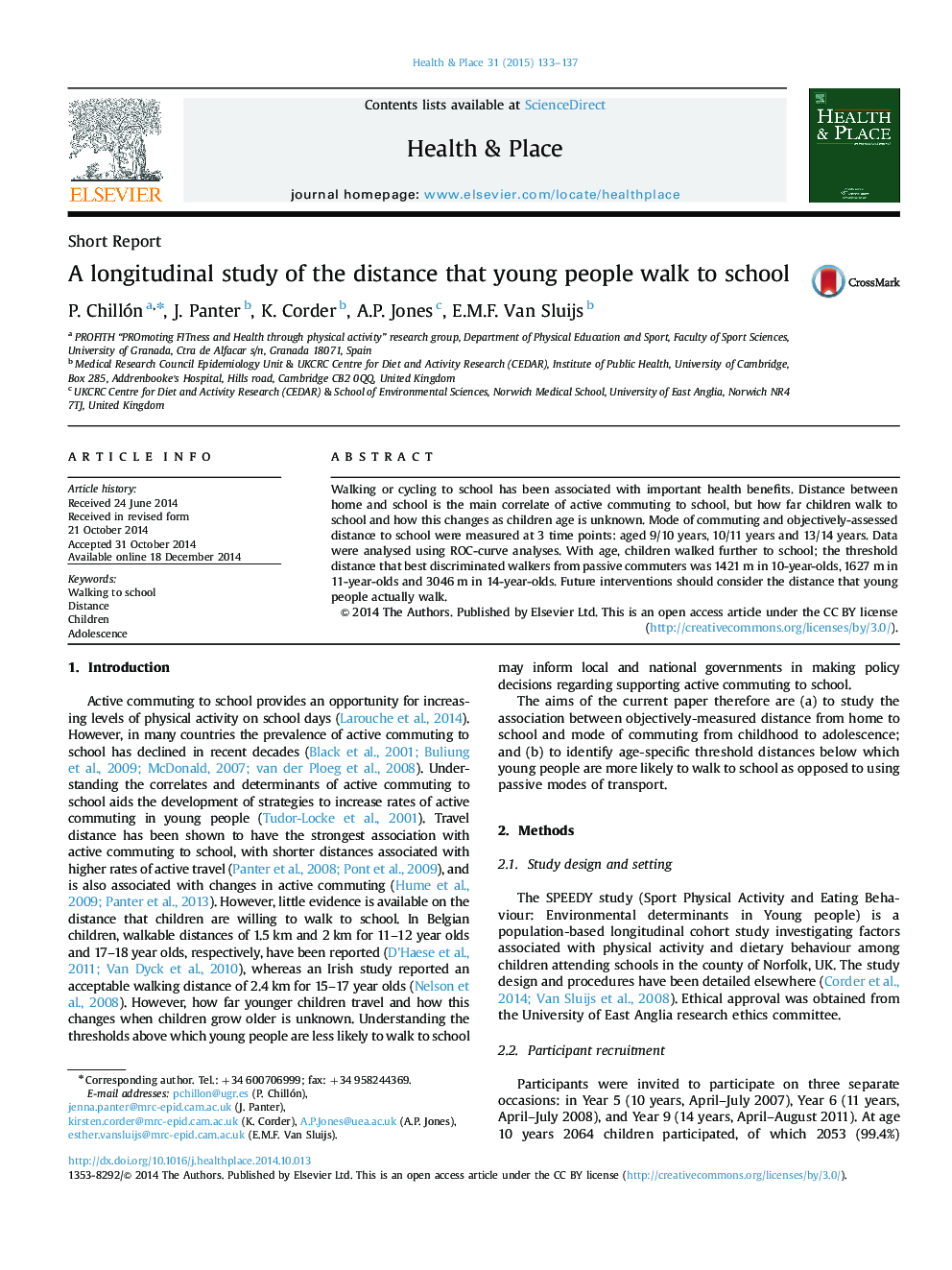| Article ID | Journal | Published Year | Pages | File Type |
|---|---|---|---|---|
| 7458362 | Health & Place | 2015 | 5 Pages |
Abstract
Walking or cycling to school has been associated with important health benefits. Distance between home and school is the main correlate of active commuting to school, but how far children walk to school and how this changes as children age is unknown. Mode of commuting and objectively-assessed distance to school were measured at 3 time points: aged 9/10 years, 10/11 years and 13/14 years. Data were analysed using ROC-curve analyses. With age, children walked further to school; the threshold distance that best discriminated walkers from passive commuters was 1421Â m in 10-year-olds, 1627Â m in 11-year-olds and 3046Â m in 14-year-olds. Future interventions should consider the distance that young people actually walk.
Related Topics
Health Sciences
Medicine and Dentistry
Public Health and Health Policy
Authors
P. Chillón, J. Panter, K. Corder, A.P. Jones, E.M.F. Van Sluijs,
